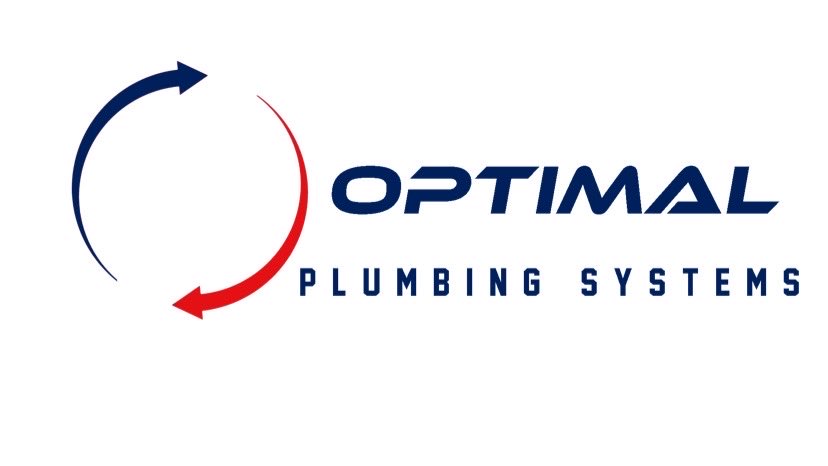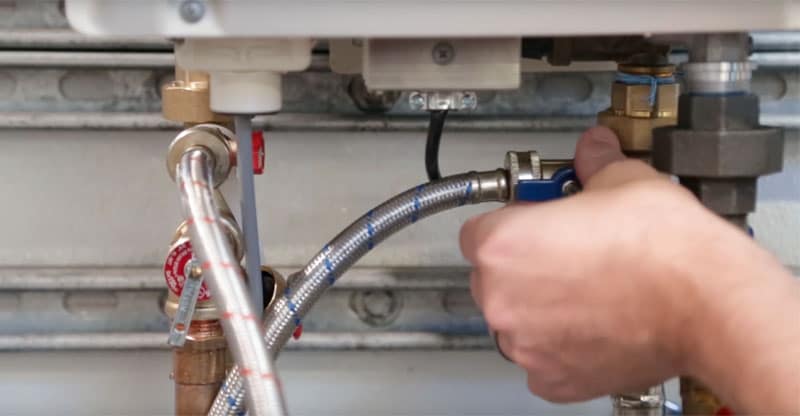You’re taking a well-deserved hot shower at the end of the day. You’re lathering up and singing to the heavens when, as if on cue, your water goes lukewarm. You fumble with the shower knob, and the water goes completely cold. Now you have to quickly finish what was supposed to be a moment for yourself to fix a frustrating problem.
In your cold and damp state, you check on your tankless water heater. An error code glares back at you. You call up the manufacturer, and they tell you to get a plumber to flush your unit. You hang up the phone and think to yourself.
Can I do that myself? Yes, you can.
At Monkey Wrench Plumbing, we’ve flushed countless tankless water heaters, and we’ve seen how LA water can negatively affect them. So we created this step-by-step guide so you can make sure you flush your tankless water heater correctly.
In this article, you will learn the basics of tankless water heater maintenance, what you’ll need to flush your water heater, and the four steps to correctly clean the internal parts of your tankless water heater. You will also leave knowing a lot more about your water heater than ever before.
What is Tankless Water Heater Flushing?
Flushing is the process of running a cleaning solution through a tankless water heater to clean it. Flushing is also known as a flush, descaling, cleaning, or maintenance. This solution breaks apart harmful scale buildup that builds up in your tankless water heater so water can flow freely through your tankless water heater and out to your fixtures. Think of it like this:
Have you ever tried to get past someone in a cramped space? You go slower. That’s what happens to your water when scale buildup gets in the way.
Flushing your tankless water heater will help you avoid:
- Early breakdown of your unit
- No hot water
- Long wait times for hot water
- Decreased water pressure when you turn on the shower/bath
- Fixtures far from your water heater acting up
- Error codes on the tankless status screen
Flushing your tankless water heater is one part of maintenance recommended by the manufacturer. This maintenance keeps your tankless running smoothly and should be performed at least once a year. Tankless maintenance processes can be broken down into two main types:
- Internal – Cleaning parts of your tankless that touch water.
- External – Cleaning things in your unit like fans and filters.
Flushing is an internal maintenance process that you or a plumber can do. On the other hand, external maintenance should be done by a plumber since the parts being cleaned are delicate.
The inside of a tankless water heater. Flushing cleans the pipes and heat exchanger inside the unit. External maintenance cleans everything else inside your tankless water heater.
.jpg)
What You Need to Flush Your Tankless Water Heater
You’ll need a few things to flush your tankless water heater, but before you get anything, make sure your water heater has isolation valves. Isolation valves are a pair of red and blue valves on your tankless unit used for maintenance. If you don’t have isolation valves, you won’t be able to flush your tankless water heater. You’ll need to call a plumber to get these installed.
A set of Noritz tankless water heater isolation valves.

The other items you will need can be bought at your local hardware store:
- Channel locks – To help open any stubborn screwed-in parts of your tankless water heater.
- Three gallons of food-grade white vinegar – You will use this to flush the inside of your tankless water heater.
- Submersible sump pump – This pump will push the vinegar through your tankless water heater. Make sure you get a low horsepower (hp) pump like a ⅕ or ⅙ hp. Anything higher than that will run the risk of pushing the vinegar through your tankless too fast to clean it.
- Two hoses – These hoses connect your isolation valves and sump pump. Washing machine hoses work well for this as long as they can match the connector size on the sump pump.
- Bucket – A plastic bucket big enough to hold the vinegar.
A sump pump

Optional gear includes:
- Rubber gloves – To protect yourself from hot water and the vinegar scent.
- Old clothes – So you don’t have to worry about dirt and vinegar getting all over you.
Lastly, make sure you have at least an hour to flush your tankless water heater. Don’t rush the flush! You’ll end up with poor results.
Flushing a Tankless Water Heater
Tankless flushing can be grouped into four main steps. They are the:
- Turning off step
- Draining step
- Flushing step
- Finishing step
Note: Some steps for tankless water heater models can differ between brands. Double-check your user manual before you flush your unit.
With that said, let’s jump into solving your problem!
1. Turn Off Your Tankless Water Heater
To start flushing your tankless water heater, you must turn off the:
- Gas line – Turn this valve off, so the flame in the burner goes out. You do not want to heat the vinegar. Heated vinegar can cause bodily harm and ruin your tankless water heater.
- Cold water line – Turn this valve off to stop water from coming into your water heater.
- Hot water line – Turn this valve off, so the cleaning solution stays in your water heater and doesn’t come out through your fixtures.
To turn off the valves, switch the knobs, so they’re running in the opposite direction to the pipes. Think of the knobs as railroad crossing gates that come down to stop your car. You stop just like the water does.
2. Drain Your Tankless Water Heater
Next, you need to empty your tankless water heater. To drain it:
- Take the drain caps off – These caps are located on both the hot and cold water lines and cover the maintenance drains.
- Drain the cold water line – Position your bucket underneath the cold water drain. Locate the small blue inlet valve next to the drain and turn it on. This will drain the small amount of water that was left in the pipes.
- Drain the hot water line – Reposition your bucket under the hot water drain. Turn on the small red drain valve. This will drain all of the hot water left in your tankless water heater.
WARNING: If you recently used your tankless water heater, be careful. The water will be hot, so use gloves to protect your hands.

3. Flush Your Tankless Water Heater
Now’s the time to clean your tankless. You must:
- Clean the prefilter – Find the prefilter on the bottom of your tankless unit and unscrew it. Look at it to see if there’s scale buildup. If there’s buildup, clean it off by swishing it around in the bucket of water and screw it back into place. You may need to use a pair of channel locks if it’s screwed in tight.
- Attach the hoses – Attach the hoses to the cold and hot drains. Make sure to screw the hoses in tightly, or vinegar will spray out of it. Place the hose attached to the hot water drain into the bucket.
- Connect the sump pump – Connect the cold water hose to the sump pump and place it in the bucket.
- Fill the bucket – Pour all of the vinegar into the bucket, so the sump pump is submerged.
- Turn on the sump pump – Plug in your sump pump and let it run for an hour.
The vinegar will get pulled into your cold water drain by the sump pump and travel into your tankless water heater. From there, it will travel through the unit, out of the hot water drain, and back into the bucket.
4. Finishing Up Your Tankless Flushing
After the full hour, take these steps:
- Turn off the inlet valves – Unscrew the hoses and remove them from the bucket. Screw the drain caps back on.
- Turn water lines and gas back on – Return the valves to their previous positions.
- Dump the contents of the bucket – You can dump the vinegar and scale mixture without worrying about causing any lasting adverse environmental effects. Grass may wilt in the presence of vinegar, but it will recover.
- Turn on a fixture in your house – Go inside and turn the cold water on for a fixture like a tub. Let it for 5 minutes to completely flush the vinegar out of your tankless.
With that done, your tankless water heater will be flushed correctly. Hooray!
Next Steps After You Flush Your Tankless Water Heater
As long as your problem was caused by scale buildup, your tankless water heater should work as good as new. If your tankless water heater isn’t working properly after the turning off, draining, flushing, and finishing steps, you may need to call a plumber for external maintenance. Lastly, if your tankless water heater hasn’t been maintained in some time, you may risk damaging it with flushing. Find out why here.
If you want to learn more about tankless water heater maintenance, why it’s essential, and what can happen if you don’t maintain your tankless water heater – read this article:
- 2 Types of Tankless Water Heater Maintenance: Why They’re Important
If you want to protect your tankless water heater more than once a year, consider reading our articles on water filtration. These options can help you solve your hard water problems.
- Water Filtration: Water Softener vs. Flow-Tech
- Flow-Tech: What It Is and How it Saves You Cash
- Water Softeners: A Crash Course
Lastly, if you would rather have a plumber maintain your water heater for you and you’re in the LA area, we at Optimal Plumbing Solutions can absolutely help you out. Just call us at +19169176280.

